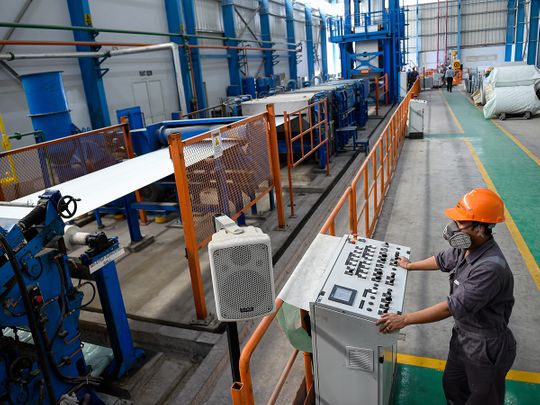
Dubai: The UAE and Saudi Arabia will continue with ‘expansionary’ fiscal strategies to accelerate growth, with the UAE GDP growing by as much as 3.8 per cent and Saudi Arabia at 3.6 per cent supported by higher oil prices.
“The economic imbalances caused by the pandemic are likely to start being resolved in 2022,” said Chris Langner, Acting Head of Investment Strategy for Private Banking at FAB. “However, key central banks have also started to reverse the extraordinarily easy monetary policy, and that could have a wide-ranging impact on asset prices and growth in developed countries.
“Some Asian countries are likely to gradually reopen this year, boosting growth and potentially inflation in a similar way to what was seen in the US in 2021.”
Structural reforms
The report said that structural reform will remain a key focus for governments. “We have seen some major improvements in the business environment, including the promotion of a more favourable regulatory landscape across much of the GCC in recent years and this, coupled with an acceleration in digital transformation, should help to further bolster the outlook for businesses and SMEs in the region,” said FAB.
The outlook added that strategies to promote new investments, including the relaxation of residency rules and longer-term Golden Visas for expats, should help to enhance the UAE’s status as a global hub.
The report - by FAB in its Global Investment Outlook 2022 report - analyses the impact of the supply chain crisis in 2021, noting that the significant effort factories across the world made to produce greater quantities faster could turn the supply shortfall that marked 2021 into a glut in 2022. The US economy, meanwhile, is likely to decelerate further given that the economic high of fiscal stimulus equating to 25 per cent of GDP will become progressively smaller.
FAB also cautioned that the rising level of inflation felt in the US could reach countries such as Singapore, Australia and China in 2022. “These countries have not dealt with rising inflation partly because their economies have not fully reopened.”
Looking at emerging markets, the report predicts that tighter spending and higher local rates could make local emerging market currencies and government bonds attractive to international investors again. Also, in emerging markets, high fertiliser costs as a result high energy prices in 2021 indicate that crop yields could remain low in 2022 after two years in which they were impacted by COVID-related issues.
GCC growth
After the anticipated rebound in economic activity across the Gulf in 2021, when growth recovered sharply from the recessionary nadir of the cycle in the second quarter of 2020, the six GCC countries should see further advances. “We anticipate an easing in the rate of improvement and that the trajectory of the medium-term economic advance will be more of a ‘shallow U shape’ in nature,” said the report. “We believe that this will be the most sustainable outcome for reflation across the region.”
The aggregate GCC economy expanded by 2.1 per cent during 2021. As global reflation continues to gain cautious momentum over the coming months, GCC economic growth should improve further and settle around a 4.4 per cent growth rate for 2022. “In the context of OPEC+ oil production cuts possibly ending by mid-2022, we assume that the private sector will be particularly important to the overall annual economic growth rate, particularly in Saudi Arabia, UAE and Qatar,” said the report.










